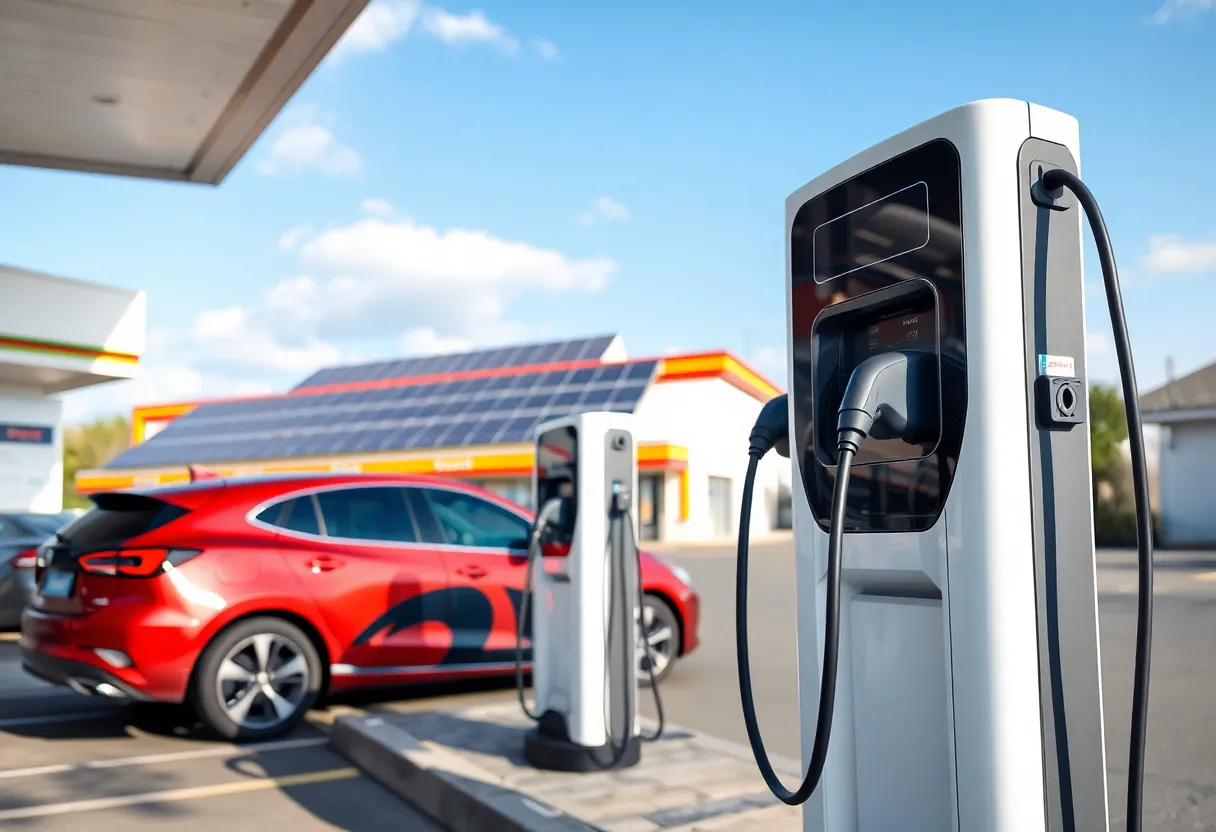California, August 19, 2025
News Summary
California has initiated the Fast Charge California Project, a $55 million incentive program aimed at expanding EV charging infrastructure statewide. The project, overseen by the Center for Sustainable Energy, focuses on establishing fast chargers in key locations such as convenience stores and public parking lots, prioritizing underserved communities. With a goal to alleviate charging concerns, this initiative could significantly boost electric vehicle adoption and is backed by substantial funding from California’s Clean Transportation Program.
California Launches $55 Million Fast Charge Initiative to Expand EV Charging Infrastructure
California has launched the Fast Charge California Project, a $55 million incentive program aimed at expanding the construction of fast chargers for electric vehicles (EVs) at public and business locations across the state. This initiative, which is administered by the Center for Sustainable Energy, is part of the California Electric Vehicle Infrastructure Project (CALeVIP), the largest EV charging incentive program in the United States.
The Fast Charge California Project specifically targets locations such as convenience stores, gas stations, shopping centers, and public parking lots. Sites that participate in the initiative can receive up to $100,000 in incentives per charging port, depending on the charger’s output. Priority will be given to tribal areas and disadvantaged or low-income communities, which are often underserved in terms of EV charging access.
The new initiative is designed to address common concerns among drivers regarding access to convenient charging options, a significant barrier to widespread EV adoption. Funding for this key program comes from California’s Clean Transportation Program, initially created in 2016 and extended in 2024, which is supported by the state’s smog abatement fee. Additional support is provided by the Greenhouse Gas Reduction Fund, which relies on revenue generated from California’s cap-and-trade program that requires major emitters to purchase carbon permits.
Policymakers have allocated over $10 billion to support the adoption of zero-emission vehicles and the necessary infrastructure. Since its inception in 2017, CALeVIP has successfully helped develop nearly 10,000 EV chargers throughout California. To further drive the transition towards sustainable transportation, in 2020, Governor Gavin Newsom issued an executive order that aims to phase out the sale of new gasoline-powered cars, SUVs, and light trucks by 2035.
The Fast Charge California Project coincides with a recent federal initiative aimed at establishing a $5 billion EV infrastructure charging program. This federal effort had previously faced challenges due to actions taken by the Trump administration, which halted funding for these projects. Importantly, California’s new program is the first statewide effort focused specifically on EV charging and stands out for its approach to potentially funding the entire cost of charger installation.
Eligible projects must be “shovel-ready,” meaning they should be able to become operational within six months of approval. This design helps prioritize underserved communities and strategically located traffic areas to alleviate charging concerns, particularly in rural and low-income neighborhoods. In the first half of 2025, electric vehicle sales in California surged by 25%, fueled by contributions from various automakers, including Tesla and Ford.
While there is enthusiasm for the initiative and positive public response, challenges remain. Issues such as potential supply chain disruptions and concerns over grid capacity could affect the smooth rollout of the program. To ensure equity in program benefits, a minimum of 50% of the funding from the initiative is earmarked for projects in disadvantaged communities. The program encourages the installation of high-powered chargers that can deliver 150 kilowatts or more, significantly reducing charging times.
Applications to access this incentive program remain open until October 29, 2025, allowing eligible sites throughout California to apply for necessary accessibility improvements. Overall, historical investments in EV infrastructure, coupled with this new initiative, firmly position California as a leader in sustainable transportation solutions.
FAQ Section
What is the Fast Charge California Project?
The Fast Charge California Project is a $55 million incentive program designed to expand EV charging infrastructure throughout California, targeting various public and business locations.
Who administers the initiative?
The project is administered by the Center for Sustainable Energy as part of the California Electric Vehicle Infrastructure Project (CALeVIP).
What locations are eligible for the program?
Eligible locations include convenience stores, gas stations, shopping centers, and public parking lots.
How much funding can sites receive?
Participating sites can receive up to $100,000 in incentives per charging port, depending on the charger’s output.
What communities are prioritized in the program?
Priority is given to tribal areas and disadvantaged or low-income communities to improve EV charging access.
When do applications for the program open and close?
Applications are open until October 29, 2025.
What is the significance of this program?
This initiative represents California’s first statewide EV charging program and aims to alleviate common concerns about charging accessibility, thus promoting zero-emission vehicle adoption.
Key Features of the Fast Charge California Project
| Feature | Description |
|---|---|
| Funding Amount | $55 million for EV charger installation incentives. |
| Incentive per Charger | Up to $100,000 per charging port based on output. |
| Target Locations | Convenience stores, gas stations, shopping centers, and public parking lots. |
| Community Focus | Priority for tribal areas and low-income communities. |
| Operational Requirement | Eligible projects must be “shovel-ready.” |
| Application Deadline | Open until October 29, 2025. |
| Historical Investment | Over $10 billion allocated for zero-emission vehicle infrastructure. |
Deeper Dive: News & Info About This Topic
- CBT News: California Launches $55M Incentive for EV Fast Charging Expansion
- Wikipedia: Electric Vehicle
- Automotive Dive: California’s $55 Million Incentive for EV Charging
- GovTech: New EV Charging Opportunities in California Programs
- WebProNews: California Launches $55M Project for EV Fast Chargers in Underserved Areas

Author: STAFF HERE HUNTINGTON BEACH
The Huntington Beach Staff Writer represents the experienced team at HEREHuntingtonBeach.com, your go-to source for actionable local news and information in Huntington Beach, Orange County, and beyond. Specializing in "news you can use," we cover essential topics like product reviews for personal and business needs, local business directories, politics, real estate trends, neighborhood insights, and state news affecting the area—with deep expertise drawn from years of dedicated reporting and strong community input, including local press releases and business updates. We deliver top reporting on high-value events such as the Huntington Beach Surf City USA Marathon, the U.S. Open of Surfing, Fourth of July celebrations at the Huntington Beach Pier, and community festivals at Huntington Beach Central Park. Our coverage extends to key organizations like the Huntington Beach Chamber of Commerce and Visit Huntington Beach, plus leading businesses in retail, hospitality, and outdoor recreation that drive the local economy. As part of the broader HERE network, including HEREAnaheim.com, HERECostaMesa.com, HERESantaAna.com, and HERELosAngeles.com, we provide comprehensive, credible insights into Southern California's dynamic landscape.





